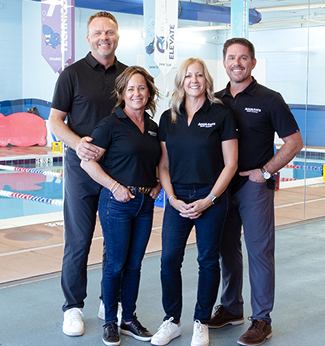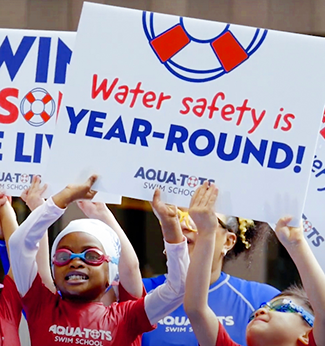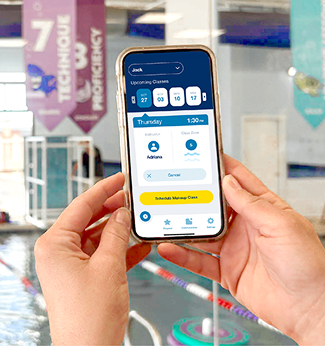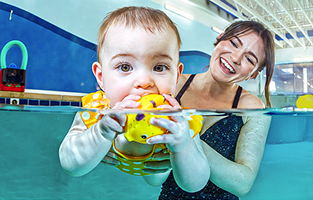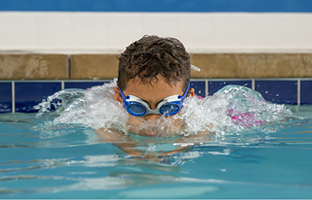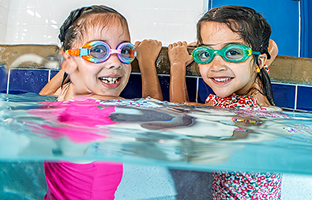The #1 Swim Toy to Avoid
When the weather starts to heat up, stores fill their aisles with colorful, eye-catching water toys. The swim aisle becomes a magnet to children and young shoppers who are eager to float, swim and splash in the sun. Super soakers, relaxing loungers, pink flamingos, bubble machines, pool noodles and water toys of every shape, size and color are available for poolside enjoyment. However, when it comes to pool toys, there is one swim toy you should avoid above all others.

Why Young Children Should Avoid Water Wings and Floaties
We are all familiar with the iconic inflatable inner tubes, loungers and water wings that are synonymous with toddlers, but these should be avoided because they are toys, not flotation devices. These toys may, in fact, keep your children afloat, but as pediatric nurse practitioner and Kid Nurse blog founder Danielle Stringer writes, “Parents want to keep their children safe in the water, but every time I go swimming, I see kids in the pool with one of the most dangerous swim toys. It makes me sad, nervous and on alert. If you own this toy, find it now, and promptly throw it away.”
Floaties pose a major risk because:
- They are easily removable. These toys can be quietly removed by young, ingenious tots who always seem to finagle in or out of head-scratching scenarios.
- They deflate easily. These water wings can pop, spring a leak or open at the flimsy blow-up valve while young children are wearing them in the water.
- Because floaties can deflate or be removed easily, they provide a false sense of security. By keeping children afloat, these toys give children and parents a temporary and inaccurate sense of safety in the water. They are not designed to hold a child’s head or face up like a U.S. Coast Guard approved life jacket. It encourages children to be more adventurous than their swimming skills allow, and parents may become less vigilant when supervising children in and around water.
- They prevent proper swimming techniques. The position and bulkiness of water wings can hinder children from learning the correct swimming techniques to keep them safe. According to Parents Magazine, “Floaties put kids’ bodies in a vertical position. In reality, though, bodies don’t stay upright in the water [… humans swim horizontally]. Children accustomed to floaties must work extra hard to find the correct center of balance.”
Pool Toy Safety Tips: How to Stay Safe While Having Fun in the Water
When it comes to pool activities, we understand the appeal and fun that come with floaties. However, these pool toys should only be used by experienced swimmers. And even these individuals need to follow rules and put safety first so they can have fun! It’s always important to be aware of the best water safety practices. Our Ultimate Guide to Pool Safety is full of facts to keep the overall pool experience safe; however, here are a few additional notes about safety when it comes to pool toys.
Pool Toys Are for Experienced Swimmers
Children need to learn proper swimming techniques so pool toys can be used for fun, not safety. The big, blow-up animals, festive food slices and colorful, glitter-filled tubes are made for confident swimmers with strong swimming skills. Aqua-Tots’ friendly, expert instructors teach swim lessons for children of all ages, starting at 4 months old. Enroll in weekly, year-round lessons today! The more lessons your child completes, the sooner they become safe, confident swimmers for life!
Best Coast Guard-Approved Flotation Devices for Kids and Non-Swimmers
Children should always wear a U.S. Coast Guard approved life vest in and near open water (lakes, oceans, rivers, etc.), including on boats, jet skis and other watercraft. If you need a life preserver for young swimmers who can not swim on their own yet, always use a floatation device approved by the U.S. Coast Guard. These devices are made to keep the wearer afloat even without swimming and the vests are designed to keep airways clear of water if the wearer becomes unconscious or injured.
Flotation Devices are NOT a Substitute for Adult Supervision
Always supervise children who are in or around water. Keep active eyes on swimmers (including strong swimmers) and stay within arm’s reach of non-swimmers, especially when swim toys are present.
Swim Toys Recommended by Aqua-Tots

With proper supervision, swim toys can add an extra element of fun and can be used as great teaching tools. Many of our swim lesson accessories can be purchased and brought home to bring some of the Aqua-Tots fun to any pool (or bathtub!). Find these at your neighborhood Aqua-Tots Swim School:
- Diving Rings
- Goggles
- Kick Boards
- Floating Foam Buddies
- Squishy Fishies
- Noodle Boats
At Aqua-Tots Swim School, we believe that when you put safety first, you can have fun every second! From our Parent and Tot baby classes to our Level 8 Swim Team, we offer lessons for every age and stage and are here to support your family as you work to achieve your water safety goals. Wherever you are on your swim journey, we’re all in this together!

